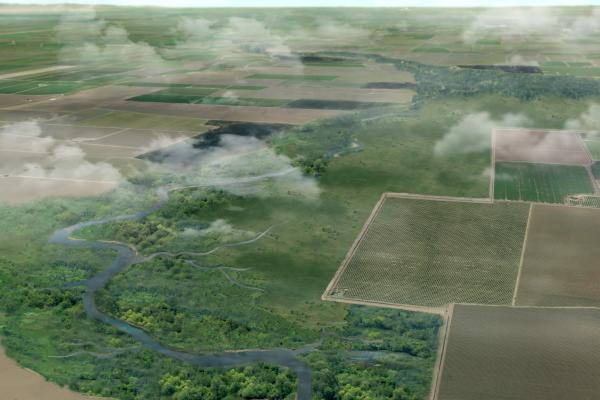Understanding Historical Context to Inform Current Salmonid Recovery Planning
Jay Stallman, Stillwater Sciences
Aquatic habitat restoration projects typically require a historical perspective to help elucidate unimpaired conditions, the type and effects of past disturbance, and system trajectory. Providing historical context is an essential early step in developing restoration goals, objectives, and appropriate design approaches. Historical context also provides a common reference for landowners, resource agencies, and other stakeholders to determine what conditions are attainable and sustainable within existing constraints. While many types of historical analyses commonly apply to landscape-level changes in physical habitat, the concept of historical ecology equally applies to understanding bottlenecks in salmon and steelhead population dynamics and shifts in the life history strategies of these species resulting from habitat degradation and other stressors. The session will focus on key components of historical analysis, approaches appropriate to different settings, and applications to fisheries habitat restoration planning and design.
Years in their Ears: What do Fish Earbones Tell us About Spring-run Chinook Salmon Success?
Flora Cordoleani, PhD, University of California Santa Cruz and National Oceanic and Atmospheric Administration
What Ancient Salmon Bones Can Teach us About Recovering California's Salmon Populations
Malte Willmes, University of California Santa Cruz, Institute of Marine Sciences, National Oceanic and Atmospheric Administration, Southwest Fisheries Science Center
Yuba River Salmon Impacted Since the Gold Rush: An Analysis to Modify Aging Infrastructure, Restore Volitional Passage and Remove Mercury from the Aquatic Environment
Carrie Monohan, PhD, The Sierra Fund and California State University Chico
Understanding Patterns and Processes That Supported Salmon in the Sacramento San Joaquin Delta Historically
April Robinson, San Francisco Estuary Institute
Novel Physical Evidence of the Historical Nativity of Chinook Salmon “Oncorhynchus tshawytscha” in the Guadalupe River Watershed of Santa Clara County, California
Richard B. Lanman, MD, Guadalupe-Coyote Resource Conservation District and Institute for Historical Ecology
Using Historical Context to Understand Altered Watershed Processes and Appropriate Restoration in Salmonid Habitat Restoration Prioritization (SHaRP)
Chris Loomis, California Department of Fish and Wildlife
Legacy Effects of Timber Harvesting on Salmonid Habitat at Caspar Creek and Avenues for Improving Habitat During Future Timber Harvests
Paul Richardson, USDA Forest Service Pacific Southwest Research Station

